Submitted by chandra on Tue, 2020-06-02 08:43
By combining data from telescopes with supercomputer simulations and virtual reality (VR), a new visualization allows you to experience 500 years of cosmic evolution around the supermassive black hole at the center of the Milky Way.
This visualization, called "Galactic Center VR", is the latest in a series from astrophysicists, and is based on data from NASA's Chandra X-ray Observatory and other telescopes. This new installment features their NASA supercomputer simulations of material streaming toward the Milky Way's four-million-solar-mass black hole known as Sagittarius A* (Sgr A*). The visualization has been loaded into a VR environment as a novel method of exploring these simulations, and is available for free at both the Steam and Viveport VR stores.
Submitted by chandra on Fri, 2019-03-22 07:51
Astronomers frequently talk about selection effects, where results can be biased because of the way that the objects in a sample are selected. For example, if distant galaxies above a certain X-ray flux – the amount of observed X-rays – are selected for a survey, the most distant objects will tend to be the most luminous, in other words producing the most X-rays.
For doing Chandra publicity we also have a bias, as we are always on the lookout for results where NASA’s Chandra X-ray Observatory data play a starring role. However, there are many papers where Chandra has an important supporting role instead, and other observatories are the stars. Our colleagues at the European Space Agency (ESA) and the University of California, Los Angeles (UCLA), have put out press releases on just such a result.
Submitted by chandra on Thu, 2019-03-21 12:04
Submitted by chandra on Wed, 2018-01-10 10:02
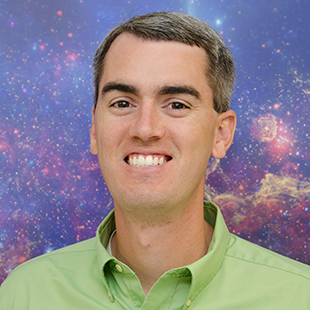 Chris Russell
Chris RussellWe welcome this guest post from Christopher Russell of the Pontifical Catholic University in Chile. Dr. Russell was the creator of the new immersive movies that allow viewers to explore the center of the Milky Way in 360 degrees. In this post, Dr. Russell provides the backstory of how he came to make these innovative movies.
I went to a Galactic Center meeting in Australia in July 2016, where I saw an Occulus Rift (a high-end virtual reality, or VR, setup) display by Chi-Kwan Chan (Univ. of Arizona). With the Rift, you plug it into your computer (so much more powerful rendering than available with a phone) and your position actually determines what is rendered. So if you walk left, right, forward, or backward, you are actually walking through the simulation and therefore seeing a different perspective. The thought of visualizing one of these Galactic Center simulations in this fashion was immediately apparent. Then we talked about 360/VR videos; what is required from the goggle side, computer specs, rendering programs, etc.
The day after the meeting, I went snorkeling, and unfortunately the Ziploc bag I put my phone in to keep it waterproof failed. Not one of my brightest ideas, I must say. But when I was looking for a new phone, the one I wanted (Galaxy s7) had two available promotions: get a free 256 GB memory card (useful, but not really fun), or the Samsung Gear VR goggles (definitely fun). I chose the latter, so now I could at least view 360-degree videos in their native format, and so would be able to view one of the Galactic Center if I could figure out how to make it.
Submitted by chandra on Wed, 2015-09-23 00:17
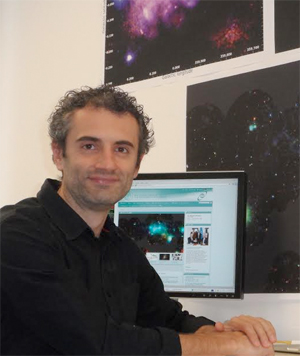 Gabriele Ponti
Gabriele PontiDr. Gabriele Ponti is the Marie Sklodowska-Curie EU Research Fellow at the Max Planck Institute for Extraterrestrial Physics in Germany. Prior to that, he was a post-doctoral fellow at the University of Southampton in the UK, after spending a year at Cambridge University’s Institute of Astronomy. Dr. Ponti earned his Ph.D. from Bologna University in Italy before moving on to the Laboratories Astro-Particule et Cosmologie in Paris. His doctoral thesis topic was studying relativistic effects in bright active galactic nuclei and he has been interested in this area since then.
As a boy, I read about the existence of black holes for the first time. I still remember the fascination of trying to grasp the physical concepts behind one of the weirdest manifestations of nature.
Black holes produce an enormous gravitational pull, as a consequence of being extremely compact: a significant amount of mass concentrated in a very small volume.
Submitted by chandra on Wed, 2015-09-23 00:06
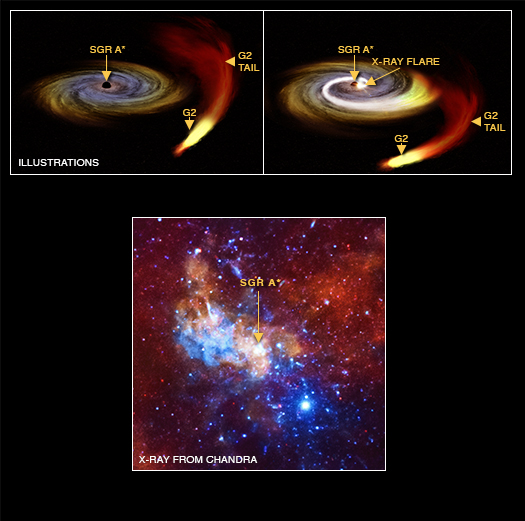
Three orbiting X-ray telescopes have been monitoring the supermassive black hole at the center of the Milky Way galaxy for the last decade and a half to observe its behavior. This long monitoring campaign has revealed some new changes in the patterns of this 4-million-solar-mass black hole known as Sagittarius A* (Sgr A*).
Submitted by chandra on Wed, 2015-05-13 12:52
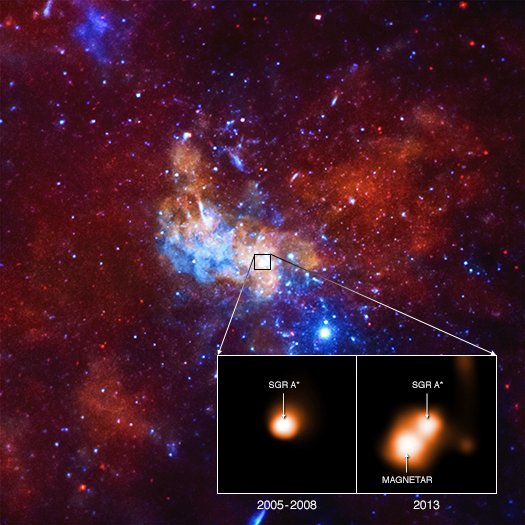
In 2013, astronomers announced they had discovered a magnetar exceptionally close to the supermassive black hole at the center of the Milky Way using a suite of space-borne telescopes including NASA's Chandra X-ray Observatory.
Magnetars are dense, collapsed stars (called "neutron stars") that possess enormously powerful magnetic fields. At a distance that could be as small as 0.3 light years (or about 2 trillion miles) from the 4-million-solar mass black hole in the center of our Milky Way galaxy, the magnetar is by far the closest neutron star to a supermassive black hole ever discovered and is likely in its gravitational grip.
Submitted by chandra on Mon, 2015-01-05 13:06
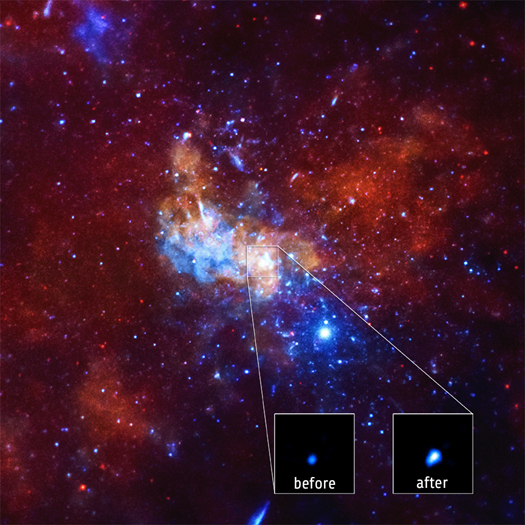
On September 14, 2013, astronomers caught the largest X-ray flare ever detected from the supermassive black hole at the center of the Milky Way, known as Sagittarius A* (Sgr A*). This event, which was captured by NASA's Chandra X-ray Observatory, was 400 times brighter than the usual X-ray output from Sgr A*, as described in our press release. The main portion of this graphic shows the area around Sgr A* in a Chandra image where low, medium, and high-energy X-rays are red, green, and blue respectively. The inset box contains an X-ray movie of the region close to Sgr A* and shows the giant flare, along with much steadier X-ray emission from a nearby magnetar, to the lower left. A magnetar is a neutron star with a strong magnetic field. A little more than a year later, astronomers saw another flare from Sgr A* that was 200 times brighter than its normal state in October 2014.
Submitted by chandra on Wed, 2014-11-12 00:20
 Andrea Peterson
Andrea PetersonWe are pleased to welcome Andrea Peterson as a guest blogger today. Andrea is a co-author of a paper reporting that the supermassive black hole at the center of our galaxy may be a source of highly energetic neutrinos, as explained in our latest press release. Andrea recently completed her Ph.D. at the University of Wisconsin-Madison, where she studied particle phenomenology. She is now a postdoctoral researcher at Carleton University in Ottawa, Ontario. She was born and raised in Minnesota, and received her undergraduate degree from Harvard University. She hopes to live somewhere warm someday.
Neutrinos are tiny particles that zoom through the universe at nearly the speed of light. They interact very rarely, so most of the time they pass right through you, me, or any object they encounter. Their ghost-like nature can be a boon for astronomers: they travel from their sources without getting absorbed or deflected. We can use neutrinos to get a clear picture of the very distant universe.
You may have noticed a problem, though. If they don’t interact very often, how can we catch them here on Earth? They have to interact with our detector to be seen!
The solution is size. The bigger the detector, the more stuff there is for the neutrinos to bump into, increasing the chances of detection. The IceCube Neutrino Observatory, located at the South Pole, uses a cubic kilometer of ice to trap neutrinos. In three years, this giant detector has collected 36 extremely energetic neutrinos that are likely to have come from astrophysical sources.
Submitted by chandra on Wed, 2014-11-12 00:10

The supermassive black hole at the center of the Milky Way, seen in this image from NASA's Chandra X-ray Observatory, may be producing mysterious particles called neutrinos, as described in our latest press release. Neutrinos are tiny particles that have virtually no mass and carry no electric charge. Unlike light or charged particles, neutrinos can emerge from deep within their sources and travel across the Universe without being absorbed by intervening matter or, in the case of charged particles, deflected by magnetic fields.
Pages